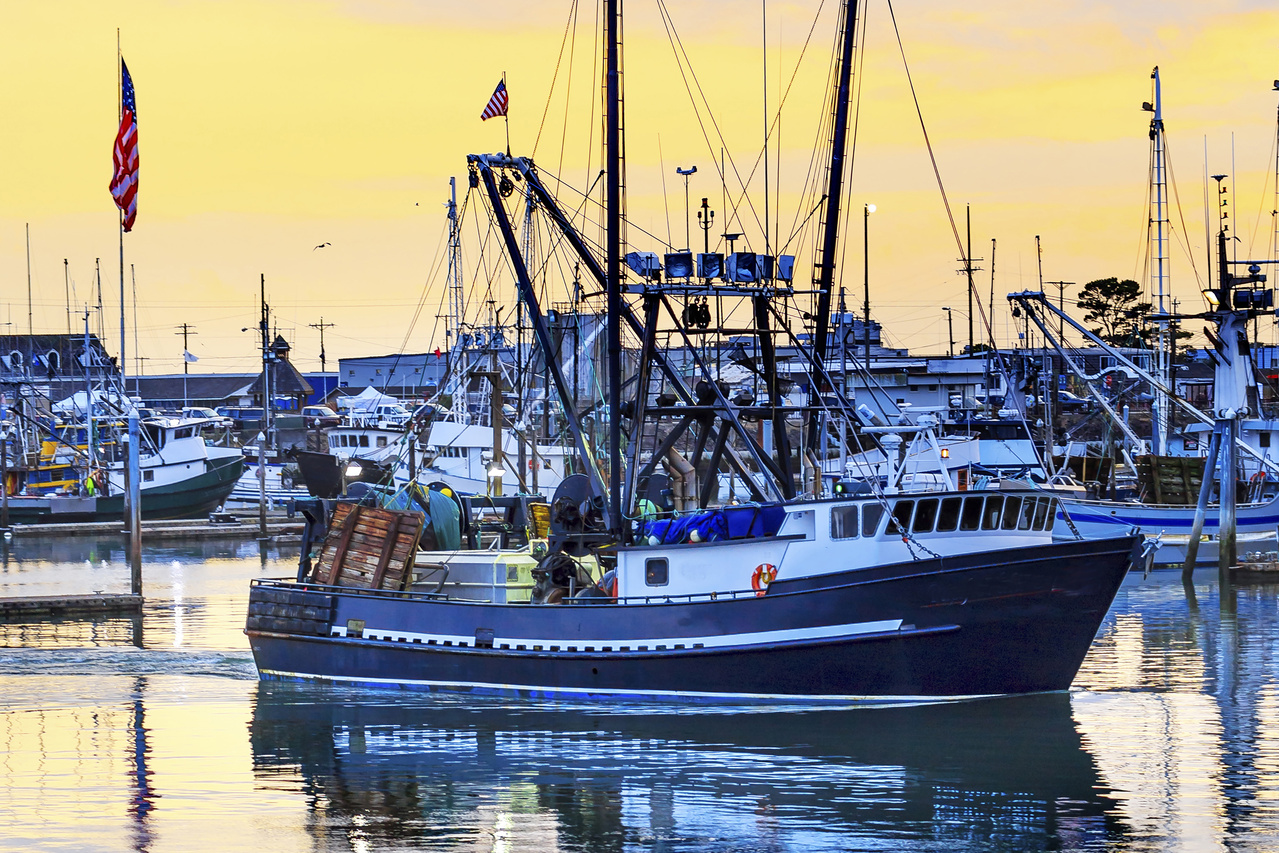How Have U.S. Fisheries Been Impacted by COVID-19?
The pandemic has brought disruption to many industries and the seafood supply chain was no exception

Around the world, the COVID-19 pandemic has upended our lives this year, most heartbreakingly for the millions who have lost a family member, friend or loved one. For many of us, daily routines have shifted dramatically, from where we travel to who we see and what we eat. And the pandemic has had a disparate impact on Black, Indigenous and People of Color, both in terms of health and economic impacts. The pandemic has also had substantial impacts on fisheries and the seafood supply chain in the United States that brings fish and shellfish from ocean to plate. While not every part of this diverse industry has been affected in the same way, there are a few common changes worth sharing.
The pandemic has dramatically reduced consumer demand for seafood and disrupted seafood supply chains.
More than 70% of the seafood Americans eat is consumed at restaurants, which means that the fishing industry was particularly hard hit when restaurants shuttered in the pandemic. At the same time, there were also big drops in the exports of seafood to other countries. A recent study found substantial declines in some fresh seafood catches (−40%) and exports (−43%) relative to 2019. With prices on fresh seafood dropping, many fishermen had to make tough decisions about whether it was worth it to go out for a day of fishing. With workers unavailable, there were also cases where fishermen were unable to offload their catch at docks. All in all, many fishermen reported revenues that were 20-70% lower than in previous years.
On the other hand, canned, frozen and dried seafood items became more popular as people stocked up on pantry items. Many Americans also became more interested in learning to cook seafood at home and were trying out less-familiar local species. At the same time, web searches for seafood delivery, takeout and recipes were up 270% in the spring and early summer.
Critical scientific surveys that support sustainable management were canceled for safety reasons.
NOAA Fisheries and their partners use a series of surveys to collect data on how many fish are caught, how abundant fish are in the water and on the status of the ecosystems that support fish populations. They use these surveys to understand the size and trends of fish populations and to ensure that fishing stays within sustainable limits. Traditional surveys mostly rely on large research vessels. With COVID risks high in the tight quarters on a ship and high risks to remote coastal communities from bringing researchers, NOAA Fisheries canceled most of its 2020 surveys. Surveys that recorded what recreational anglers were catching at the dock, called creel or intercept surveys, were also canceled in many locations. It’s not clear if and when all of the various surveys and data collection programs will be running again, or whether these programs will resume in the same form as before the pandemic, but we do know that these gaps in data will have impacts for years to come. NOAA Fisheries and managers are working on ways to address the gaps in data and ensure management is sustainable even with survey disruptions.
There are some indications of an uptick in recreational fishing, but many recreational fishing businesses still faced challenges.
With indoor activities limited, many people headed outdoors during the pandemic and looked to their favorite recreational activities. While there is not a lot of data, there are anecdotal reports that recreational fishing in certain areas of the country was much higher than normal, at least during some of the pandemic. At the same time, many for-hire fishing operations, which take paying customers out fishing, were closed and faced the same challenges as other businesses while things were locked down. Speaking at a Congressional roundtable earlier this year, fishing guide Ashley Nicole Lewis noted that this year had been particularly hard because she was refunding bookings and not taking on new clients during the important spring and summer months, which left her no ability to prepare her business for the next year. Other fishermen, as well as bait and tackle shops, report that things were even busier than in previous years, especially during the summer months.
There were some outbreaks of COVID on fishing vessels and in processing facilities.
Because U.S. fishermen are helping maintain the food supply, they are considered essential workers. Similarly, seafood processing plants are considered critical infrastructure for the food and agriculture sector, so processors have remained at work. Like other essential workers, fishermen and processors have faced risks from working in close spaces during the pandemic. There have been several outbreaks of COVID-19 documented on large offshore fishing vessels and in processing facilities, and there were also labor issues that arose, like the 150 cannery workers that were forced into quarantine in an airport hotel without pay. In rural coastal areas with fisheries that rely on many seasonal workers, there were also concerns that influxes of new people could lead to outbreaks that would overwhelm local medical capacity. In Alaska fishing communities, extensive safety measures and protocols were put in place to try and prevent this outcome and were largely successful.
What does this all mean for sustainable fisheries and fish conservation?
It can be difficult to tell how all these changes will ultimately affect fish populations. It’s likely that some fisheries were not able to catch their full sustainable limit for the year. In other fisheries, there may be increased fishing that was not fully captured by surveys, meaning that our estimates of catch may be too low. What we do know is that sustainable fisheries work in part through the partnership of fishermen, scientists, managers and others like conservation groups, and the disruptions to fisheries from COVID-19 make sustainable management more challenging.
Looking for ways you can help? Here are 6 ways to support sustainable fisheries from home.